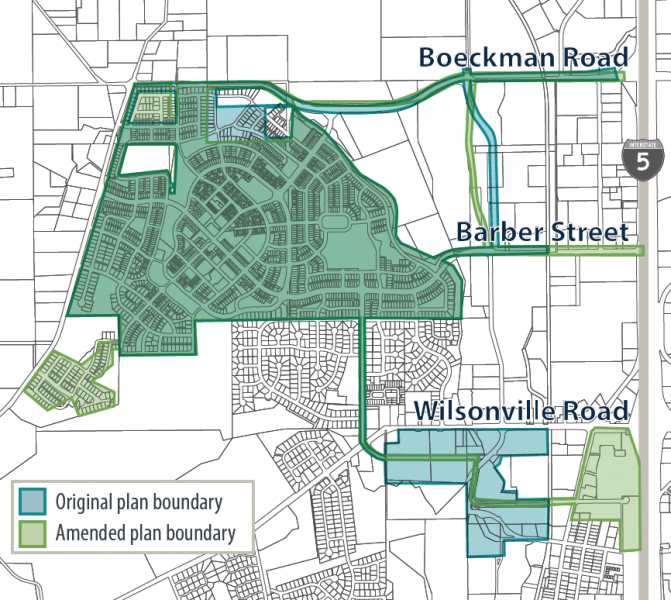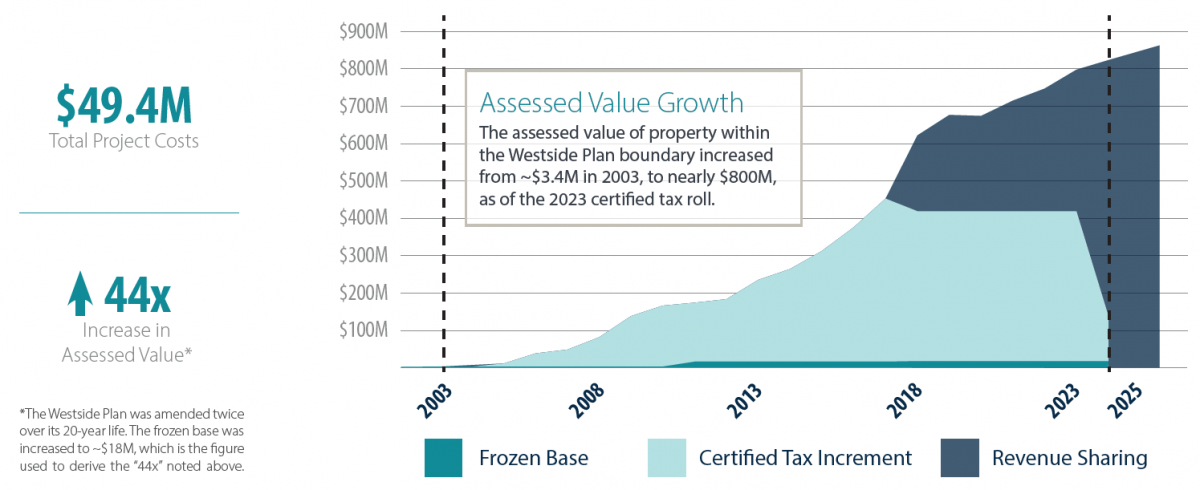West Side District - pending closure 2024
Notice: The West Side Plan collected its last tax increment installment in Fiscal Year 2023-24. The Plan has one project remaining (Brown Road) but no further increment will be collected. This Plan began revenue sharing in 2016, and now all property taxes from the plan area will flow to taxing districts.

The Wilsonville West Side Urban Renewal Plan Area is located on the west side of I-5, including the Villebois Master Plan area (old Dammasch Hospital site and adjacent properties) and some property located south of Wilsonville Road between Brown Road and the railroad tracks.
The West Side Plan was created in order to build public infrastructure to enable the development of the master-planned community of Villebois in west Wilsonville. The West Side Plan is one of the most successful uses of urban renewal in Oregon
history, in terms of assessed value creation, private investment leverage, as well as community development and partnership with impacted taxing districts.
In 2016, the City capped tax increment collections, which allowed taxing districts to enjoy new tax revenues before the plan was closed in 2024—this best practice is called revenue sharing.
BY THE NUMBERS

The Villebois Story
Villebois—an award-winning master-planned community of over 2,400 detached homes, townhomes, condos, and apartments, numerous parks, and a trail system, all built around a central mixed-use piazza—exists on a site where there once was a vacant, state-owned mental hospital and asylum. This outcome was far from inevitable. Dammasch State Hospital closed in 1995 and the site was to become a women’s prison, until unified local public outcry derailed those plans. After Wilsonville leadership identified an alternative site for the prison, the Oregon Legislature enacted statute requiring the sale of Dammasch to a private entity
for redevelopment as a mixed-use urban village. However, the area was not served by public utilities or adequate roads, and the cost of extending those facilities to serve new development would preclude the financial feasibility of any such development.
In 2003, the City of Wilsonville adopted the West Side Urban Renewal plan, and for the next 20 years used tax increment financing to fund the construction of roads and utilities to connect the master-planned Villebois community with the facbric of the City. The Westside Plan invested $49.4M in order to leverage private investment that created new assessed property value that now stands at nearly $800M as the urban renewal area closes. This increase in value creates a new revenue stream for taxing districts, in perpetuity.
Furthermore, two specific projects from the West Side Plan demonstrate the importance of partnerships with taxing districts. The City required and paid for systems fees for fire sprinklers in every detached Villebois home using urban renewal funds, which relieved the Fire District from needing to fund, build and staff a new fire station to serve the area. Urban Renewal funding also purchased land that was transferred to the School District, where Lowrie Primary School was built to serve new students from the growing Villebois neighborhood.
The West Side Plan as a Public Model
The District is further a model for public-public partnerships. Tualatin Valley Fire & Rescue and Wilsonville's Urban Renewal Agency negotiated a nationally-recognized program that requires sprinklers in every dwelling unit in Villebois. Metro and ODOT participated in infrastructure prioritization and funding.




